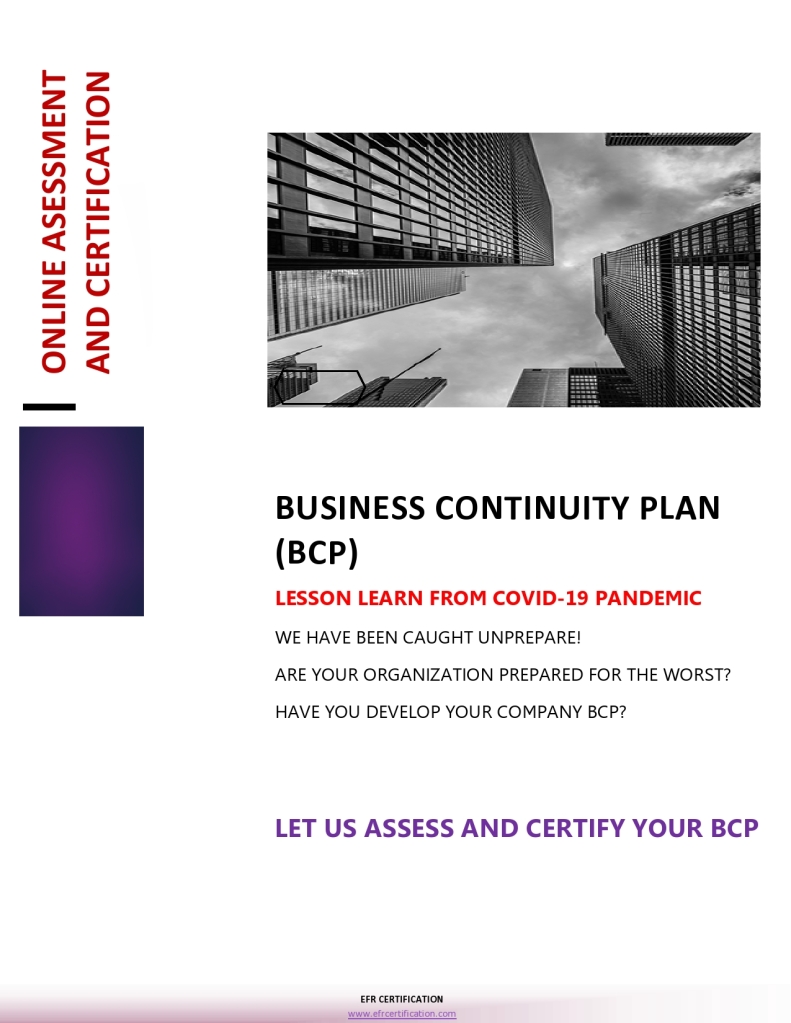More than ever especially during Covid-19 lockdown, organizations are looking for a flexible substitute the conventional to virtual auditing due to lower costs, eliminate unnecessary travel, and ease the burden of demanding work schedules and travelling time.
But can virtual auditing deliver the same results as conventional auditing?
We already know either conventional and virtual auditing works in domains is obtaining the EVIDENCE, by question the auditee, observed the actual workplace and check documentation.

In EFR, we already develop the procedure for online audit since 2009 according to International Accreditatition Forum IAF MD4 – 2008 under computer assisted auditing
IAF-04 was updated on 2018 IAF MANDATORY DOCUMENT FOR THE USE OF INFORMATION AND COMMUNICATION TECHNOLOGY (ICT) FOR AUDITING/ASSESSMENT PURPOSES
How we implement it?
Questioning – Understanding and Competency
- Live interaction between auditor and auditee via web auditing platform
- Actual face to face virtual auditing environment
Observed – Actual Activity
- Live web camera with mobilty platform
- CCTV
- Control room camera
- Drone (Eventhough listed in our procedure, we not yet implemented it)
Check – Documentation
- Document sharing through web auditing share screen
- Send out the documentation early i.e. during stage 1
Issue in online audit
- Time consuming wating for documentation
- To minimised this, provide the list documentation at least 1 week before the audit.
- Information system data protection
- All our online audit is not recorded (screen recording). Client can record but we did not request any copy of recording from the client to minimised risk of leak of confidential information
- Poor connection (poor audit, poor video)
- We only conduct online audit after the risk assessment result shown a good internet connection
Hence the result from conventional auditing vs virtual auditing is almost the same.
Kindly contact us for any enquiries on virtual (online) auditing.







